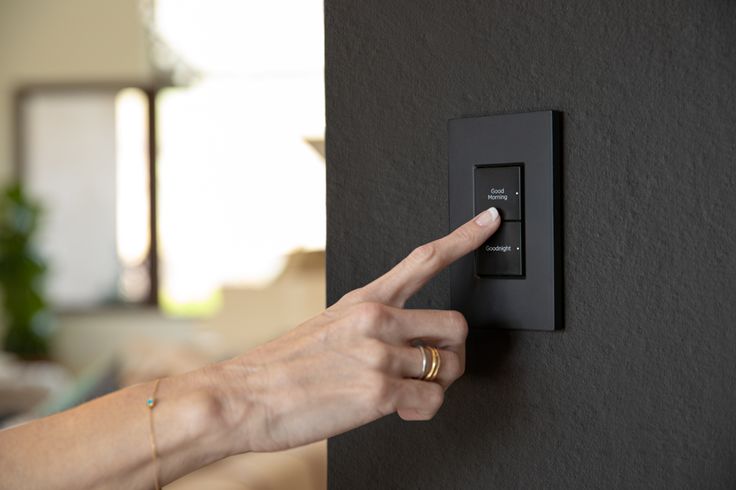The Ultimate Guide to Energy-Efficient Windows for Your Home
The Ultimate Guide to Energy-Efficient Windows for Your Home – Energy efficiency is no longer a trend but a necessity for modern homeowners. As energy costs rise and concerns about environmental impact grow, upgrading to energy-efficient windows is one of the most effective ways to improve your home’s sustainability. Not only do these windows enhance comfort by maintaining consistent indoor temperatures, but they can also significantly reduce energy consumption and utility bills. In this comprehensive guide, we’ll explore everything you need to know about energy-efficient windows, from their benefits to key features and how to choose the right type for your home.
1. Why Energy-Efficient Windows Matter
Energy-efficient windows are designed to prevent heated or cooled air from escaping your home. Traditional windows often let heat escape during the winter and allow it to enter in the summer, forcing your HVAC system to work harder. This results in higher energy consumption, increased carbon emissions, and inflated utility bills.
Benefits of Energy-Efficient Windows:
- Lower Energy Bills: These windows can reduce heating and cooling costs by up to 30%.
- Comfort Improvement: They maintain a consistent indoor temperature, eliminating cold drafts and hot spots.
- Environmental Impact: By reducing energy consumption, energy-efficient windows decrease your home’s carbon footprint.
- Increased Home Value: Many homebuyers are now prioritizing energy-efficient features, which makes this upgrade a valuable investment.
- Noise Reduction: Double- and triple-pane windows, common in energy-efficient models, can also block outside noise, enhancing indoor comfort.
2. How Do Energy-Efficient Windows Work?
Energy-efficient windows are designed with multiple technologies that work together to minimize heat transfer. Understanding these technologies will help you make an informed choice when selecting new windows for your home.
Key Features of Energy-Efficient Windows:
- Low-E Glass Coatings: Low-E (low emissivity) coatings are thin layers of metallic particles that reflect heat. This coating allows natural light to pass through the glass but prevents heat from entering or escaping, depending on the season.
- Multiple Panes: Double- or triple-pane windows trap gas between the glass layers, acting as insulation. This barrier helps reduce heat transfer, making your home more energy efficient.
- Gas Fills: Windows with multiple panes often contain inert gases, such as argon or krypton, between the panes. These gases are denser than air, further reducing heat transfer.
- Warm Edge Spacers: These spacers are used to separate panes of glass and keep them in place. Traditional metal spacers can conduct heat, but energy-efficient models use materials with low thermal conductivity to minimize heat loss.
- Frame Material: The material of the window frame also affects its energy efficiency. Vinyl, fiberglass, and wood-clad frames offer better insulation than aluminum, which can conduct heat.
3. Types of Energy-Efficient Windows
There are several types of energy-efficient windows, each with distinct advantages depending on your home’s location and specific needs.
1. Double-Pane Windows
These windows have two layers of glass with a layer of gas (usually argon) in between. Double-pane windows are a popular choice for most climates as they provide a good balance between insulation and cost.
2. Triple-Pane Windows
Triple-pane windows offer superior insulation with three layers of glass and two layers of gas. They are ideal for regions with extreme temperatures, whether cold or hot, as they offer maximum protection from outdoor elements.
3. Low-E Coated Windows
Windows with Low-E coatings are designed to reflect heat. These are particularly useful in regions with high solar exposure, as they prevent excess heat from entering your home during the summer.
4. Gas-Filled Windows
Argon and krypton gases are commonly used between window panes to enhance insulation. These windows are a great choice for homes in extreme climates as they minimize heat transfer.
4. How to Choose the Right Energy-Efficient Windows for Your Home
Choosing the best energy-efficient windows for your home involves several factors, including your climate, budget, and aesthetic preferences. Here’s what to consider when making your decision:
1. Climate
Your home’s geographic location is one of the most important factors in choosing energy-efficient windows. For example:
- Cold Climates: In colder regions, look for windows with a high R-value, which indicates better insulation properties.
- Hot Climates: Homes in warmer regions benefit from windows with a low Solar Heat Gain Coefficient (SHGC), which measures how much solar radiation passes through the window.
- Mixed Climates: For areas with both hot summers and cold winters, consider windows with a balance between a low U-factor (heat loss) and low SHGC.
2. Window Frame Material
The frame of your window plays a crucial role in its energy efficiency. Different materials have varying levels of thermal conductivity.
- Vinyl: One of the most energy-efficient and affordable materials, vinyl offers excellent insulation.
- Wood: Wood frames offer natural insulation and are aesthetically pleasing but require more maintenance.
- Fiberglass: Known for its durability and insulation properties, fiberglass is a strong option for extreme climates.
- Aluminum: While durable, aluminum is not a good insulator. It is best used in regions with mild temperatures.
3. Glazing Options
Glazing refers to the number of glass layers and coatings on a window. Double glazing (two panes) is common, while triple glazing (three panes) is recommended for areas with harsh weather.
4. Installation Quality
Even the best energy-efficient windows won’t perform well if they aren’t installed correctly. Poor installation can lead to air leaks, drafts, and moisture issues. Always hire a professional installer who is experienced with energy-efficient windows to ensure optimal performance.
5. Energy-Efficient Windows and Sustainability
Energy-efficient windows are an essential component of a sustainable home. By reducing energy consumption, they contribute to lower greenhouse gas emissions and a reduced carbon footprint.
1. Energy Star Certification
When shopping for energy-efficient windows, look for the Energy Star label. This certification ensures that the window meets or exceeds the energy efficiency standards set by the U.S. Environmental Protection Agency (EPA). Energy Star-rated windows are independently tested and proven to lower energy use and utility costs.
2. LEED Certification
If you’re aiming for a green home, choosing energy-efficient windows can help earn points towards LEED (Leadership in Energy and Environmental Design) certification. LEED is a globally recognized rating system for green buildings, and energy-efficient windows contribute to overall sustainability.
3. Recycling and Lifespan
Another sustainability factor to consider is the lifespan and recyclability of your windows. Materials like wood and fiberglass are biodegradable, while vinyl can be recycled at specialized facilities. Choosing windows with a long lifespan also means fewer replacements over time, reducing your environmental impact.
6. Cost of Energy-Efficient Windows
The cost of energy-efficient windows varies depending on the type, material, and installation. While energy-efficient windows typically have a higher upfront cost compared to standard windows, the long-term savings on energy bills often make up for the initial investment.
1. Cost Breakdown
- Double-Pane Windows: $150 to $600 per window, depending on frame material.
- Triple-Pane Windows: $500 to $1,000 per window.
- Low-E Coated Windows: $300 to $1,000, depending on the specific coatings and glass quality.
2. Installation Costs
Installation costs vary based on the complexity of the project and the number of windows being replaced. Professional installation typically ranges from $100 to $300 per window.
3. Return on Investment (ROI)
The average ROI for energy-efficient windows is around 70-80%, and they can reduce your energy bills by 12-30% annually. While the exact ROI depends on your location, the quality of the windows, and installation, most homeowners will see a significant return over time.
7. Government Incentives and Rebates
Many governments offer incentives, rebates, and tax credits for homeowners who install energy-efficient windows. These programs can help offset the initial cost of upgrading, making it more affordable to invest in sustainability.
1. Federal Tax Credits
In some countries, including the U.S., federal tax credits are available for energy-efficient home improvements. Check with your local government to see if your window purchase qualifies.
2. Local Rebates
Many utility companies and local governments offer rebates to homeowners who upgrade to energy-efficient windows. Research available programs in your area to maximize savings.
8. Common Myths About Energy-Efficient Windows
Despite their proven benefits, there are several myths surrounding energy-efficient windows that can deter homeowners from making the switch. Let’s debunk some of the most common misconceptions:
Myth 1: Energy-Efficient Windows Are Too Expensive
While the upfront cost of energy-efficient windows can be higher than standard options, their long-term savings on energy bills often outweigh the initial investment. Additionally, government rebates and incentives can make energy-efficient upgrades more affordable.
Myth 2: All Energy-Efficient Windows Are the Same
Not all energy-efficient windows are created equal. Different technologies, glazing options, and frame materials impact a window’s performance. Homeowners should select windows based on their climate and specific energy-saving goals. Consulting energy ratings such as the U-factor, SHGC, and Energy Star certification will help you identify the best choice for your home.
Myth 3: Replacing Windows Is the Only Way to Improve Energy Efficiency
While upgrading to energy-efficient windows can significantly enhance your home’s energy performance, it’s not the only solution. Improving insulation, sealing air leaks, and installing energy-efficient doors can also boost your home’s overall efficiency. However, windows are often one of the largest sources of energy loss, making them a crucial area to address.
Myth 4: Energy-Efficient Windows Don’t Offer Style Options
Energy-efficient windows come in a wide range of styles, designs, and materials. From classic wood frames to modern vinyl or fiberglass options, homeowners don’t have to sacrifice aesthetics for functionality. You can find energy-efficient windows in all popular designs, including casement, double-hung, bay, and sliding windows.
Myth 5: Energy-Efficient Windows Are Only Beneficial in Extreme Climates
While energy-efficient windows are particularly valuable in regions with extreme temperatures, they also offer benefits in moderate climates. Even in areas with mild weather, these windows help maintain indoor comfort, reduce energy bills, and protect against harmful UV rays.
9. Maintenance and Care for Energy-Efficient Windows
To maximize the performance and longevity of your energy-efficient windows, it’s essential to maintain them properly. Here are some tips to help you care for your new windows:
1. Regular Cleaning
Cleaning your windows not only improves visibility but also maintains their energy performance. Dirt and debris can affect the function of window seals, spacers, and coatings.
- Glass Cleaning: Use a mild window cleaner and a soft cloth to clean the glass. Avoid abrasive cleaners that could damage Low-E coatings.
- Frame Cleaning: For vinyl and fiberglass frames, use a damp cloth and mild detergent. Wooden frames may require periodic repainting or resealing to prevent moisture damage.
2. Inspect Seals and Weatherstripping
Over time, window seals and weatherstripping can deteriorate, leading to air leaks and reduced energy efficiency. Inspect the seals around your windows annually, and replace any damaged or worn-out weatherstripping.
3. Check for Condensation
Condensation between window panes is a sign of a broken seal, which compromises the window’s insulating properties. If you notice condensation forming between the panes, contact a professional to assess whether the window needs to be repaired or replaced.
4. Repaint or Reseal Wooden Frames
Wooden window frames require regular maintenance to protect them from moisture, rot, and insects. Repainting or resealing every few years will help preserve the frame’s structural integrity and energy performance.
11. Energy-Efficient Windows: Future Trends and Innovations
As technology advances, the future of energy-efficient windows continues to evolve. Here are some exciting trends and innovations that could shape the next generation of windows:
1. Smart Windows
Smart windows, also known as electrochromic or dynamic windows, allow users to control the amount of light and heat entering their homes. These windows use advanced glass coatings that can be adjusted via a smartphone app, remote control, or even automatically based on the time of day and weather conditions. Smart windows can further enhance energy savings by reducing the need for heating, cooling, and artificial lighting.
2. Solar Windows
Imagine windows that not only reduce energy loss but also generate electricity. Solar windows are equipped with photovoltaic technology embedded in the glass, allowing them to convert sunlight into energy. While this technology is still in its early stages, solar windows have the potential to provide a renewable energy source for homes, reducing reliance on external power grids.
3. Self-Cleaning Glass
Self-cleaning windows are treated with a special coating that breaks down dirt and grime when exposed to sunlight. This innovation reduces the need for manual cleaning, making maintenance easier for homeowners. In addition to convenience, self-cleaning windows can help maintain the energy efficiency of the glass by keeping it clear and free of debris.
4. Improved Insulating Materials
Researchers are continually exploring new materials to improve window insulation. Aerogel, a highly insulating and lightweight material, is being tested for use in energy-efficient windows. Aerogel-filled windows could provide even better thermal performance than traditional gas fills, further reducing heat transfer and energy loss.
11. Final Thoughts: Making the Right Choice
Upgrading to energy-efficient windows is a long-term investment in your home’s sustainability, comfort, and value. Whether you live in a region with extreme temperatures or a mild climate, energy-efficient windows offer tangible benefits, from lower utility bills to enhanced indoor comfort.
When selecting the right windows for your home, consider your climate, budget, and aesthetic preferences. Be sure to look for certifications like Energy Star and choose professional installation to ensure that your windows perform optimally. With proper care and maintenance, your energy-efficient windows can provide decades of improved performance and savings.
By taking the time to research your options and make informed choices, you can create a more energy-efficient, environmentally friendly home for yourself and future generations.
Conclusion
Energy-efficient windows are a smart investment for any homeowner looking to reduce energy consumption, lower utility bills, and contribute to a more sustainable future. With numerous options available—ranging from double- and triple-pane windows to advanced Low-E coatings—there’s a solution for every climate and budget. By choosing the right energy-efficient windows and ensuring proper installation, you can enjoy long-term savings, improved comfort, and a greener home.
Upgrading your windows today can make a significant difference for both your wallet and the environment.
Energy-efficient windows are a smart upgrade for any homeowner who values sustainability, cost savings, and indoor comfort. With advancements in window technology, there are now more options than ever to suit every home’s style and performance needs. By choosing the right materials, glazing options, and professional installation, you can significantly reduce your energy consumption and enjoy a more comfortable living environment. Whether you’re building a new home or upgrading an existing one, energy-efficient windows are an investment worth making for the future of your home and the planet.






